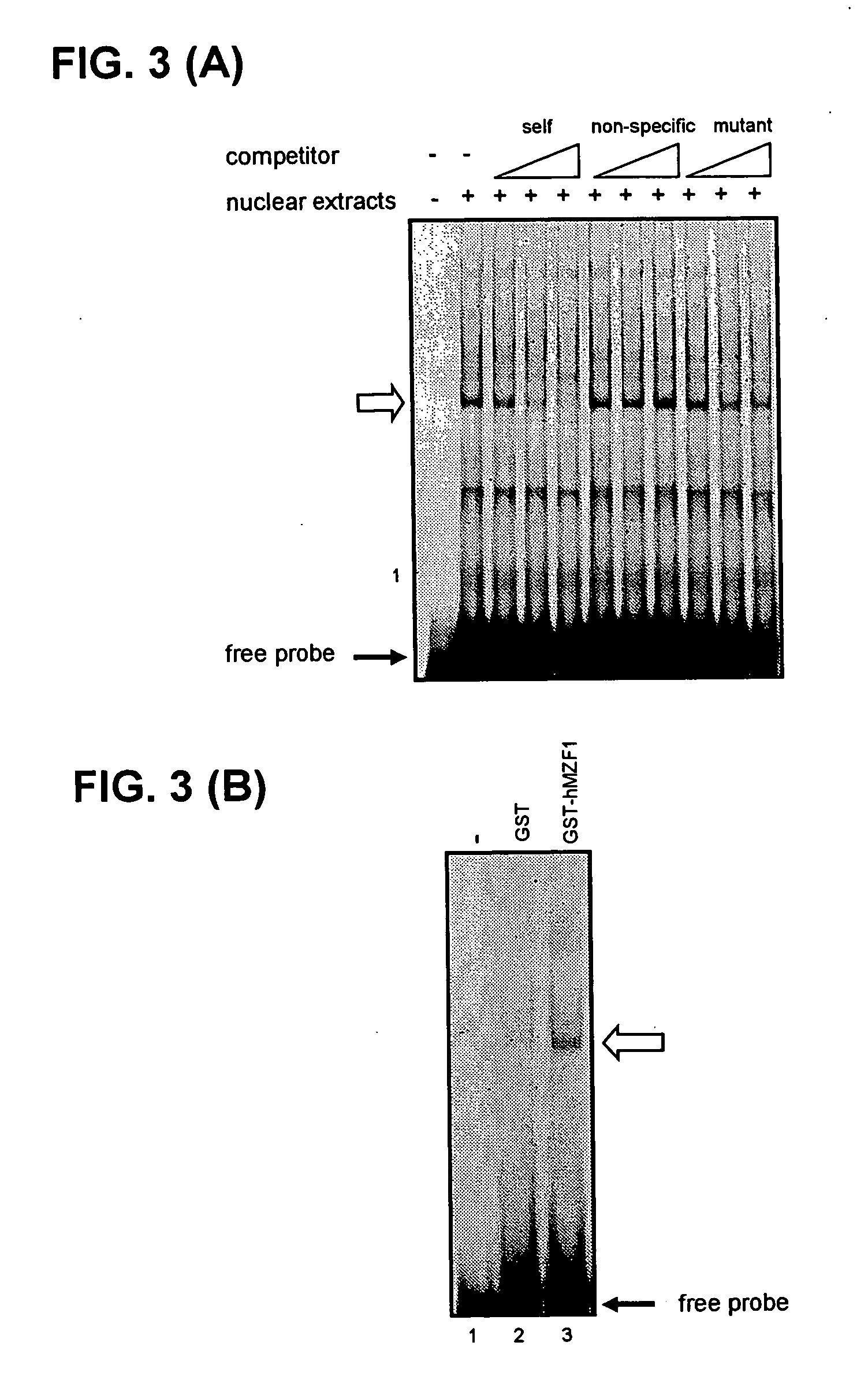Regulation of expression of high-affinity immunoglobulin e (ige) receptor beta-chain
a technology of immunoglobulin and beta-chain, which is applied in the field of regulation of the expression of the high-affinity immunoglobulin e (ige) receptor beta-chain gene, and can solve problems such as becoming a problem in society
- Summary
- Abstract
- Description
- Claims
- Application Information
AI Technical Summary
Problems solved by technology
Method used
Image
Examples
example 1
Measurement of Transcription Regulatory Activity of the nt4180-nt4260 Region of the Human FcεRl β-Chain Gene
[0049] FcεRl β-chain gene fragments were obtained from a human genomic library (Stratagene) by plaque hybridization. Gene fragment nt4180-nt4260 containing a part of intron 4 that was obtained using restriction enzyme digestion and PCR technique was inserted downstream of the human FcεRl β-chain promoter in an expression plasmid encoding luciferase as the reporter gene.
[0050] To suspensions of KU812 human cell line (1×107 cells) expressing the FcεRl β-chain in 500 μl of medium (RPMI (Invitrogen) containing 20% FCS), either 5 μg of the aforementioned reporter plasmid or 0.1 μg of the pRL-CMV plasmid (Toyo Ink) that encodes the sea pansy luciferase gene under the control of the CMV promoter as a control were added; then electroporation (300 V, 950 μF) was performed using a Gene Pulser II (Bio-Rad). Half the volume of each suspension was transferred to a 12-well plate to which ...
example 2
Detailed Mapping of the Transcription Regulatory Element by Introduction of Site-Specific Mutations
[0053] Next, the transcription repressive sequence in the nt4180-nt4260 β-chain gene region was identified. Nucleotide substitutions of 3-5 bases were introduced in this region using a Quick Change Site-Directed Mutagenesis Kit (Stratagene), and luciferase assays were performed in the same manner as in Example 1 using reporter plasmids into which each of the site-specific mutations had been intorduced.
[0054] As shown in FIG. 2, when a mutation was introduced in the vicinity of nt4190, the transcription repressive activity was blocked, and therefore it became clear that the sequence in the vicinity of nt4190 is essential for transcription repressive activity.
example 3
Identification of Binding Factor by Gel Shift Assay
[0055] A nuclear fraction was prepared from KU812 cells in the following manner. After the KU812 cells were collected, they were rinsed with ice-cold phosphate buffer (8 g NaCl, 0.2 g KCl, 0.2 g KH2PO4, and 2.9 g Na2HPO412H2O in 1 L H2O), and after the cells were suspended in a like manner in ice-cold buffer A (10 mM HEPES pH 7.9, 10 mM KCl, 0.1 mM EDTA, 1 mM DDT, 1 mM PMSF, 1 μg / mL leupeptin, 1 μg / mL aprotinin), the suspension was let stand on ice for 10 min. NP-40 was added to make a final concentration of 0.5%, and after the suspension was let stand for 15 min on ice, centrifugal separation was performed for 1 min at 6000 × g. The precipitated fraction was suspended in buffer E (20 mM HEPES pH 7.9, 400 mM KCl, 15 mM MgCl2, 0.2 mM EDTA, 1 mM DTT, 1 mM PMSF, 1 μg / mL leupeptin, 1 μg / mL aprotinin), and after the suspension was let stand for 1 h on ice, centrifugal separation was performed for 10 min at 10000× g. The supernatant obta...
PUM
| Property | Measurement | Unit |
|---|---|---|
| Affinity | aaaaa | aaaaa |
Abstract
Description
Claims
Application Information
 Login to View More
Login to View More - R&D
- Intellectual Property
- Life Sciences
- Materials
- Tech Scout
- Unparalleled Data Quality
- Higher Quality Content
- 60% Fewer Hallucinations
Browse by: Latest US Patents, China's latest patents, Technical Efficacy Thesaurus, Application Domain, Technology Topic, Popular Technical Reports.
© 2025 PatSnap. All rights reserved.Legal|Privacy policy|Modern Slavery Act Transparency Statement|Sitemap|About US| Contact US: help@patsnap.com



